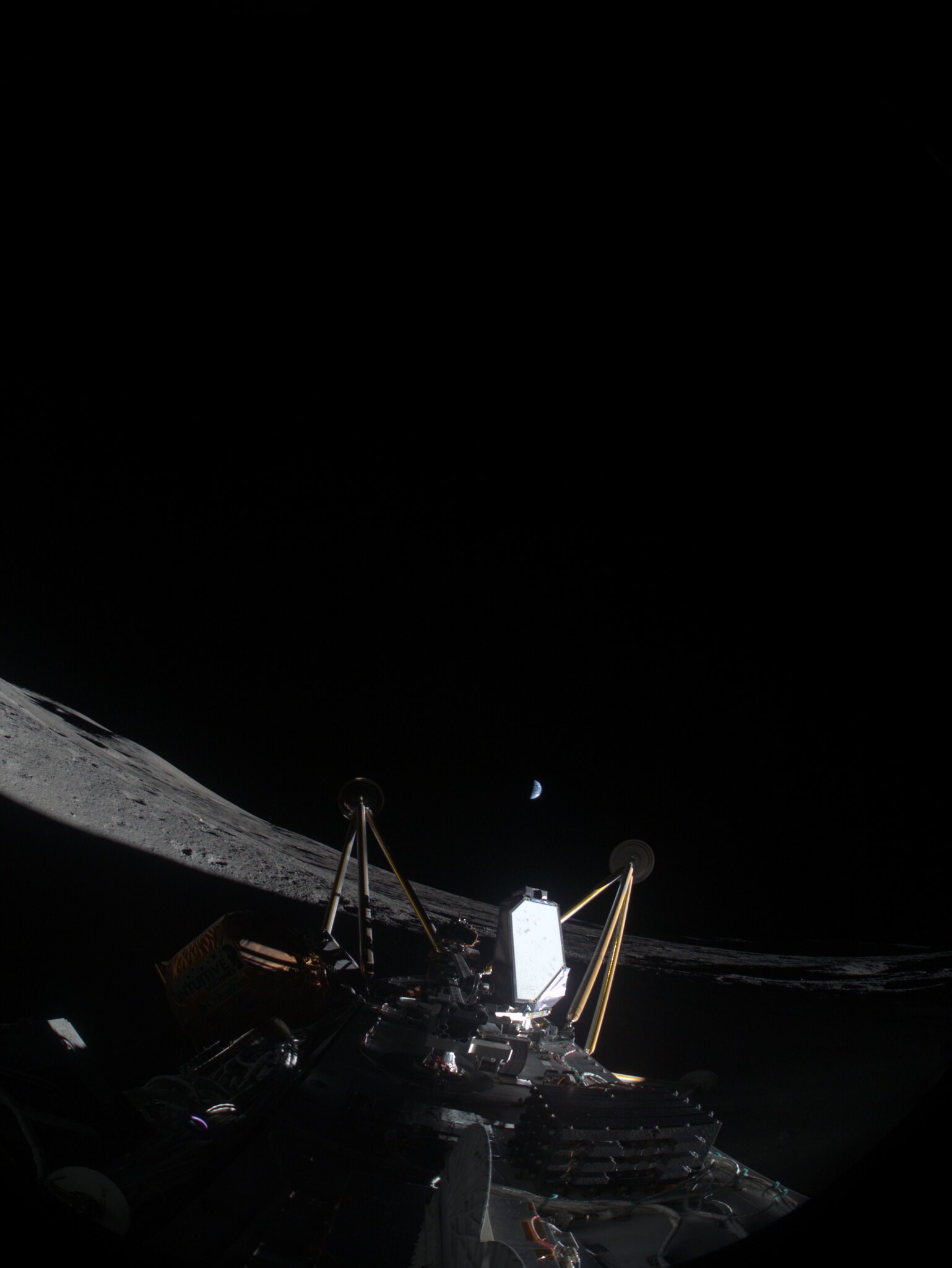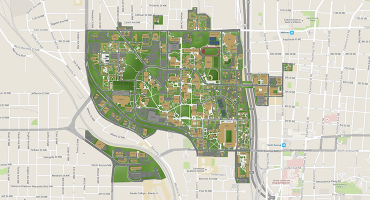When NASA’s PRIME-1 Mission landed on the moon in March, an Intuitive Machine’s lander named Athena ended up on its side. The faulty landing meant the instruments couldn’t drill into the moon to measure water and other resources, as intended. But the mission wasn’t a total loss: PRIME-1’s The Regolith Ice Drill for Exploring New Terrain (TRIDENT) and Mass Spectrometer Observing Lunar Operations (MSOLO) could still operate and gather some data. The mission, led by Georgia Tech alumni who collaborated with Georgia Tech faculty, is already pivotal to future NASA missions.
PRIME-1, or Polar Resources Ice Mining Experiment-1, is a combination tool of two instruments: TRIDENT and MSOLO. PRIME-1’s objective is to help scientists determine resources available on the moon, with the eventual goal of sending humans to live there. TRIDENT is a space-rated drill designed and built by Honeybee Robotics that can extract lunar soil up to 3 feet deep. MSOLO is a mass spectrometer that can analyze TRIDENT’s soil samples for water and other critical volatiles. Together, this data can show how viable living on and mining from the moon could be.
Two Georgia Tech alumna, Jackie Williams Quinn and Janine E. Captain, led the PRIME-1 team for NASA. They had help with computer modeling of PRIME-1’s mass spectrometer data from Georgia Tech’s Regents’ Professor Thom Orlando and Senior Research Scientist Brant Jones in the School of Chemistry and Biochemistry.
Georgia Tech to the Moon
Georgia Tech’s expertise influenced all areas of developing PRIME-1, but perhaps their biggest contribution was the collaboration across disciplines.
Quinn, a civil engineering graduate, wrote the initial proposal. She also managed TRIDENT’s development, through a contract with Honeybee Robotics, ensuring it was also built to operate in the harsh lunar environment (a process known as ruggedizing). The team worked with Honeybee’s Jameil Bailey, fellow Tech alumnus.
Captain, the MSOLO principal investigator and chemistry Ph.D. graduate, never planned to work at NASA. But her advisor, Orlando, got her interested.
“What drew me to NASA’s In-Situ Resource Utilization team is that I could apply the instrumentation techniques that I learned in my Ph.D. to measuring vital things like oxygen on the moon,” Captain said.
Ruggedization Redux
When it was confirmed in 2008 the moon had water, NASA wondered if humans could one day live there. Having a functional mass spectrometer on the moon was paramount to determining where the water was and how much of it existed. Captain’s team modified a commercial mass spectrometer and tested it in a harsh environment comparable to the moon: Hawaii’s dormant shield volcano, Mauna Kea. Once they demonstrated the mission operation in this environment, they worked to ruggedize an existing one manufactured by instrumentation company INFICON. The team worked with INFICON and through lab tests, they showed that all components of the mass spectrometer functioned in a lunar vacuum environment.
In Orlando’s lab, his team experimented with lunar material to determine how water interacts with lunar soil. From there, they created a theoretical model that simulated how much water they might find from what PRIME-1 sampled.
“To create the model, we used the data of how water sticks to the lunar surface — from controlled experiments carried out in our ultra-high vacuum chambers at Georgia Tech,” Orlando said. “We approached the problem from a surface physics point of view in these lab experiments, but then in our model, we were able to connect to the actual mission activity.”
Once PRIME-1 hardware validation testing was finished, NASA was ready to launch. That’s when things got hairy.
“We don't fully understand everything that happened during the landing, but the fact that PRIME-1 was fully functional is pretty amazing,” Captain said. “We got the data. It was so cool to know that all this work we did was worth it.”
Moon Milestones
Although they didn’t get the chance to drill into the moon as planned, they can still analyze the data PRIME-1 pulled from the lunar atmosphere. This data includes how the spacecraft may have contaminated the local atmosphere.
“PRIME-1 was the only instrument that got to fully run and check out everything because when the lander fell over, the instrument was on top,” Quinn noted. “They were able to extend the drill all the way out a meter. It was drilling into empty space, but we were able to show that the drill got the signal from Earth, fully extended, and was able to auger and percuss. We were also able to fully operate MSOLO and gather data on gases coming off the lander in its final resting orientation.”
For More Information Contact
Tess Malone, Senior Research Writer/Editor
tess.malone@gatech.edu



